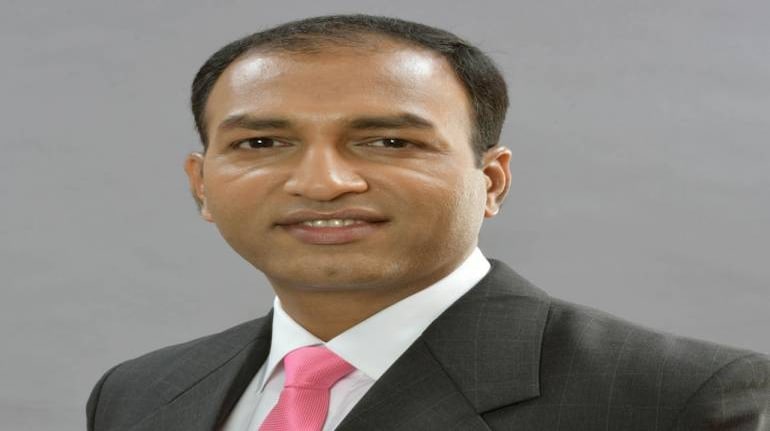Rusmik Oza of Kotak Securities, who has over 23 years of experience in the capital market, expects Nifty to go anywhere between 14,000 and 15,000 sometime in the first quarter of CY21.
Oza, Executive Vice President, Head of Fundamental Research at Kotak Securities, sees a sharp recovery in FY22E net profit from automobiles, banks, metals, and the telecom sector. Our updated free float EPS for Nifty-50 stands at Rs.488 for FY21E, Rs.628 for FY22E, and Rs.746 for FY23E, he said in an interview with Moneycontrol’s Kshitij Anand.
Q) The year 2020 which most of us thought could go down as a black year for equity markets has in fact turning out to be a year of new trends, fresh record highs, and a whole new meaning to life. What are your views for 2021?A) CY21 will be marked with hopes of the early roll-out of the Covid-19 vaccine, normalisation of activities, and unperturbed growth recovery. We expect CY21/FY22 to be a better year with likely strong recovery in both the economy and earnings.
There will be a remarkable shift in the Nominal GDP growth from (-) 6.1% in FY21E to 14% in FY22E which will help corporates to report healthy revenue and earnings growth.
We see markets behaving differently in the first half and second half of CY21. With fresh stimulus coming from BoJ & ECB and likely stimulus coming from Fed early next year we expect FPI flows to remain strong in the initial months of CY21.
The Q3 earnings season could turn to be strong due to healthy advance tax figures and also lead to some earnings upgrades.
We can expect the Nifty to go anywhere between the 14,000 & 15,000 range sometime in the first quarter of CY21. Post budget and Q4 result season we expect markets to go into some kind of consolidation phase and witness time correction.
We expect moderation in monetary policies and rising yields scenario in 2HCY21, which will lead to mean reversion of valuations towards 10/15 year averages.
Based on the thesis we have used the previous 15 years peak of 19x Fw PE multiple to value the Nifty-50 to derive at our CY21 end target. We expect Nifty50 to end CY21 somewhere ~13,500 and BSE Sensex to end at ~46,000.
Q) In one word if you have to define the year 2020 what would that be and why?
A) ‘Unpredictable’ is one word to describe the way the world has lived this year. The pandemic has changed the way we live and work with superfast acceleration towards a digital economy.
The world has come closer as Mr.Uday Kotak says ‘Geography is History’. Work from home would have been unimaginable at the start of the year for most of us.
No one could have imagined that Tesla would have a market cap of US$ 658 bn by end of CY20. It had become difficult to project and forecast economic growth as every quarter threw a new surprise.
The rise in commodity prices in the last few months has also been euphoric. For equity investors, this year’s move is no less than a roller coaster ride.
We have seen unprecedented fiscal and monetary support coming from governments and central banks to protect economies from going into a deep recession.
All-in-all this year has been full of surprises with some structural changes that could be the new normal and remain in the future.
Q) What is your outlook on earnings for the year 2021?
A) We expect earnings of the Nifty-50 Index to rise by 11% in FY21E, by 28% in FY22E, and 19% in FY23E. FY21E estimates are not very relevant given the impact of the COVID pandemic on the domestic and global economy, which will result in a sharp decline in both volumes and profitability in many sectors.
We see a sharp recovery in FY22E net profit coming from automobiles, banks, metals, and the telecom sector. Our updated free float EPS for Nifty-50 stands at Rs.488 for FY21E, Rs.628 for FY22E, and Rs.746 for FY23E.
It is interesting to note that the last five years' earnings CAGR of Nifty-50 has been just 2.6% (i.e. FY16-20). On the low base, we expect Nifty-50 earnings CAGR for the period of FY20-23E to be ~18%.
Q) The big event which will be in focus is Budget 2021. What are your expectations from the event? FM promised it to be a vibrant Budget and a lot of policies to support the economy have already been rolled out. So, what could cheer markets?
A) In the last few months the government has been consistently announcing new reforms and measures to address the slowdown. Some of the measures like farm reforms and PLI schemes are quite structural in nature and will have a very good long-term impact.
The high consolidated fiscal deficit could constrain government spending. Nonetheless, basis our healthy Nominal GDP growth projection of ~14% for FY22 we can see targeted higher expenditure for certain ministries.
Changes in taxation and any reforms for capital markets would be taken positively by investors.
Q) What is the feedback that you are getting from FIIs/HNIs for India?
A) Many HNIs have turned cautious on the market as one can see from the recent monthly outflows from equity mutual funds.
Many FIIs & HNIs are taking the passive investment route (i.e. ETFs) as it is difficult to time the market and also to play the sectoral rotation that has been happening in the past few months.
Many HNI’s are sitting on cash position and would-be buyers in any major correction. Unfortunately, markets have been constantly going up and not provided the desired entry to many HNI investors.
Investors are now more optimistic on the economy and earnings outlook and to that extent, they would turn buyers in any future market correction.
Q) Bitcon outperformed most of the asset classes. Do you think it is time for investors to take cryptocurrency seriously and add some percentage to their portfolio which could be part of global diversification?
A) The constant weakness in the Dollar Index, pause in Gold prices, and aggressive digitalization has raised optimism on the outlook of cryptocurrency. Few countries like China are trying to find alternatives to the Dollar.
The recent acceptance and addition of Bitcoin by Large institutional investors is giving hope for the future of cryptocurrency. The volatility in Bitcoin as compared to gold is very high which could be a concern for many investing in cryptocurrency.
The future of cryptocurrency will also depend on central banks' acceptance as an alternative to gold. Today most central banks have some portion of their forex reserves in the form of gold because of its liquidity and hard asset value.
From the low of 5000 in Mar’20 Bitcoin has moved to 23,800 as of now while the Dollar Index in the same time has come off from 103 to 90. Considering the extraordinary rise of Bitcoin in the last nine months it is ideal to wait for a healthy correction to provide any allocation towards it.
Q) Any new trends in terms of sectors which you are seeing that could last for the next couple of years?
A) The shift towards a smaller digital world is the realty. Many structural changes could have a long-lasting impact on sectors like commercial real estate, media, hospitality, automobiles, banking, energy, pharmaceuticals, IT services, and telecom. Platforms like zoom calls and work from home can challenge the need for office space in the future.
Shift from traditional media channels to digital media and OTT platforms will challenge the traditional media companies. Convenience of communicating through video conferencing could impact the hospitality business in the future.
The acceleration of electric vehicles with falling battery prices will challenge traditional automobile companies (although many of them are also moving towards EVs). The evolution of payment apps and Fintech companies could challenge many NBFCs and banks in the future.
The ESG theme and shift towards renewables could threaten the future of traditional coal-based power companies and also mining companies. In pharmaceuticals, new generation companies are working on cell therapy and gene therapy which could challenge the traditional medicines in the future.
Data and 5G could be the future of telecom and shift to Cloud and adoption of Artificial intelligence could drive IT services in future. In all this disruption one needs to identify to top three companies in each businesses and look to move allocations accordingly.
Q) Your key learnings from the year 2020? And what would you advise investors to follow in the coming year?
A) Key learnings from the year 2020 have been as follows: 1) Not to time the market and be an aggressive buyer in any steep fall 2) Brace change and adapt to the new normal and spot sectors and companies likely to benefit from the change 3) Ride the wave when the force of liquidity is very strong keeping valuations aside for some time as going against the wave could lead to heavy opportunity cost. 4) Keep an eye on central banks' actions, analyse their implications, and try and visualise the impact on bond yields (As bond markets provide cues for equity markets much in advance).
Investors need to be more stock specific going forward as broader markets have rallied and valuations have gone to a decade high. One needs to stick to his/her circle of competence rather than following the herd mentality.
Go for quality stocks having a good management track record and avoid penny stocks. Post Demon, GST, and the pandemic, the big companies were are and will become bigger.
In this context have a large proportion of equity portfolio in leading stocks of each sector. Stick with leaders and sectors with an oligopolistic kind of structure.
Q) Value or beta – what would be more popular in 2021 and why?
A) CY20 has favoured high growth and beta stocks. Most of the high growth and quality stocks are now ‘priced to perfection’ leaving scope for potential re-rating in value stocks.
As we go into CY21 with few vaccines coming in the market it is ideal to play the recovery theme for next year. In this scenario, cyclical sectors and stocks could score over defensives in CY21.
Many economy driven stocks fall under the value definition of trading at fair to low valuations. Returns, in CY21, could be more broad-based as compared to the wide divergence seen in CY21.
Returns could also be a function of earnings upgrades and the potential of any re-rating which could be higher in the case of value stocks in CY21.
Q) What would you prefer large-caps or mid, and smallcaps in the year 2021?
A) The Nifty Mid Cap 100 Index was trading at a discount to Nifty-50 in terms of valuations at the start of CY20 which has now gone into premium.
Based on Bloomberg consensus estimates the Nifty Mid Cap 100 Index is trading at 24x on a one-year Fw PE basis versus 23x for the Nifty-50.
Between large and mid-caps we prefer large-caps as they could be more resilient in any future correction and also remain the favourites of FPIs. The BSE Smallcap Index is still underperforming the Nifty-50 because of the steep erosion in market cap over the previous two years.
Since the small-cap space is an ocean one can do individual bottom fishing with proper research and reading.
Disclaimer: The views and investment tips expressed by experts on Moneycontrol.com are their own and not those of the website or its management. Moneycontrol.com advises users to check with certified experts before taking any investment decisions.










_2020091018165303jzv.jpg)




























